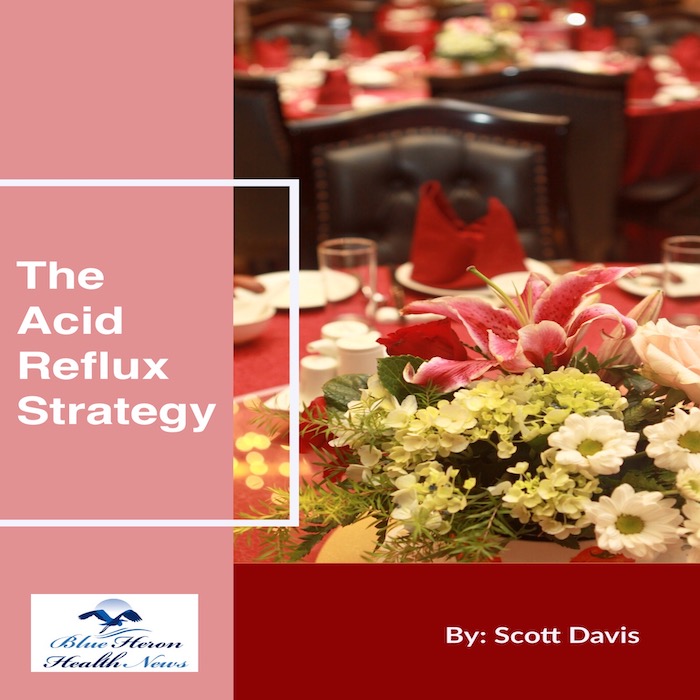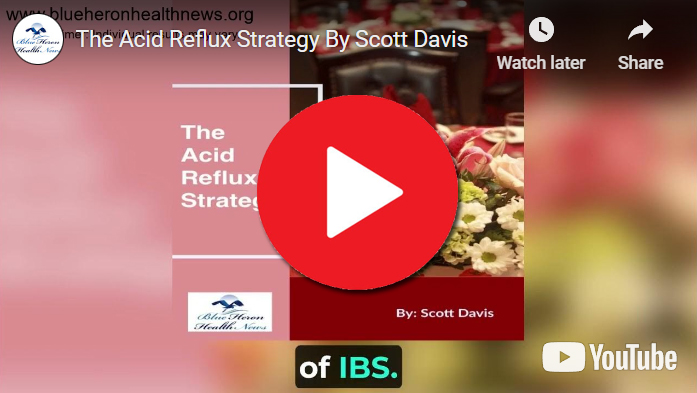
Acid Reflux Strategy™ By Scott Davis According to this eBook, you can start removing the symptoms of acid reflux and other similar problems just by making some changes in your diet, levels of stress, and lifestyle. It will guide you on how to change from the combination of food items to the sleep positions to relieve your problems. It also includes a list of food items you should focus on while shopping for it to find a natural treatment for your symptoms.
What causes acid reflux?
Introduction
Acid reflux, also known as gastroesophageal reflux (GER), occurs when stomach acid or bile flows back into the esophagus, causing symptoms such as heartburn, regurgitation, and chest pain. When acid reflux becomes chronic and severe, it may develop into gastroesophageal reflux disease (GERD). Understanding the causes of acid reflux is essential for effective prevention and treatment. This comprehensive analysis will explore the anatomical, physiological, dietary, lifestyle, and medical factors that contribute to acid reflux, providing a detailed understanding of the condition.
Anatomy and Physiology of Acid Reflux
Lower Esophageal Sphincter (LES) Dysfunction
The lower esophageal sphincter (LES) is a ring-like muscle at the junction between the esophagus and the stomach. It plays a critical role in preventing acid reflux by acting as a valve that opens to allow food and liquid to pass into the stomach and then closes to prevent the backflow of stomach contents.
- Weak LES: If the LES is weak or relaxes inappropriately, it can allow stomach acid to flow back into the esophagus. This dysfunction is a primary cause of acid reflux. Several factors can weaken the LES, including certain foods, beverages, medications, and medical conditions.
- Transient LES Relaxations: In some cases, the LES may relax temporarily in response to specific triggers, allowing stomach acid to reflux into the esophagus. These transient relaxations are more common after meals and can be influenced by dietary and lifestyle factors.
Increased Intra-Abdominal Pressure
Increased pressure within the abdomen can force stomach contents to reflux into the esophagus. Several conditions and activities can contribute to increased intra-abdominal pressure:
- Obesity: Excess weight, particularly around the abdomen, increases pressure on the stomach and LES, promoting acid reflux.
- Pregnancy: Hormonal changes and the growing uterus during pregnancy can increase abdominal pressure, leading to acid reflux.
- Heavy Lifting and Straining: Activities that involve heavy lifting or straining can increase intra-abdominal pressure, causing reflux.
- Tight Clothing: Wearing tight clothing, especially around the waist, can increase pressure on the abdomen and LES, promoting reflux.
Dietary Factors
Diet plays a significant role in the development of acid reflux. Certain foods and beverages can relax the LES, increase stomach acid production, or directly irritate the esophagus.
Trigger Foods and Beverages
- Fatty and Fried Foods: High-fat foods can relax the LES and slow stomach emptying, increasing the risk of acid reflux. Examples include fried foods, fast food, and high-fat dairy products.
- Spicy Foods: Spicy foods can irritate the esophagus and increase stomach acid production, triggering reflux symptoms.
- Citrus Fruits and Juices: Citrus fruits, such as oranges, lemons, and grapefruits, are highly acidic and can cause irritation and reflux symptoms.
- Tomato-Based Products: Tomatoes and tomato-based products, such as pasta sauce, ketchup, and salsa, are acidic and can trigger reflux.
- Chocolate: Chocolate contains both caffeine and theobromine, which can relax the LES and promote acid reflux.
- Caffeinated Beverages: Coffee, tea, and soda contain caffeine, which can relax the LES and increase stomach acid production.
- Alcohol: Alcohol can relax the LES, increase stomach acid production, and irritate the esophagus, leading to reflux.
- Carbonated Beverages: Carbonated drinks can cause bloating and increase pressure on the LES, promoting reflux.
Lifestyle Factors
Certain lifestyle choices and habits can contribute to the development of acid reflux.
Smoking
- Nicotine: Nicotine in tobacco relaxes the LES and increases stomach acid production, making acid reflux more likely.
- Smoking-Induced Inflammation: Smoking can cause inflammation of the esophagus and impair the function of the LES, promoting reflux.
Eating Habits
- Large Meals: Consuming large meals can increase stomach pressure and cause the LES to relax, leading to reflux.
- Late-Night Eating: Eating late at night or lying down shortly after eating can allow stomach acid to flow back into the esophagus.
- Eating Quickly: Eating too quickly can lead to swallowing air and overeating, both of which can increase stomach pressure and promote reflux.
Physical Activity
- Posture: Lying down or bending over after eating can increase the risk of acid reflux by allowing stomach acid to flow back into the esophagus.
- Exercise: Certain types of exercise, such as running or heavy lifting, can increase intra-abdominal pressure and promote reflux.
Medical Conditions
Several medical conditions can increase the risk of acid reflux by affecting the function of the LES, increasing stomach acid production, or causing delayed gastric emptying.
Hiatal Hernia
A hiatal hernia occurs when the upper part of the stomach pushes through the diaphragm into the chest cavity. This can weaken the LES and promote acid reflux.
Gastroparesis
Gastroparesis is a condition that causes delayed gastric emptying, where the stomach takes longer to empty its contents into the small intestine. This can increase the risk of acid reflux by causing stomach contents to remain in the stomach for longer periods.
Connective Tissue Disorders
Conditions such as scleroderma can affect the connective tissues and muscles of the esophagus, leading to weakened LES function and increased risk of acid reflux.
Medications
Certain medications can contribute to acid reflux by relaxing the LES, increasing stomach acid production, or irritating the esophagus.
Medications That Relax the LES
- Calcium Channel Blockers: Used to treat high blood pressure, these medications can relax the LES and promote reflux.
- Anticholinergics: Used to treat conditions such as irritable bowel syndrome (IBS) and overactive bladder, these medications can relax the LES.
- Benzodiazepines: Used to treat anxiety and insomnia, these medications can relax the LES.
Medications That Increase Stomach Acid Production
- NSAIDs: Nonsteroidal anti-inflammatory drugs, such as ibuprofen and aspirin, can increase stomach acid production and irritate the esophagus.
- Corticosteroids: Used to treat inflammatory conditions, these medications can increase stomach acid production and promote reflux.
Medications That Irritate the Esophagus
- Bisphosphonates: Used to treat osteoporosis, these medications can cause irritation and inflammation of the esophagus.
- Iron Supplements: High doses of iron supplements can cause irritation of the esophagus and promote reflux.
Hormonal Factors
Hormonal changes can influence the development of acid reflux, particularly in women.
Pregnancy
- Hormonal Changes: During pregnancy, increased levels of progesterone can relax the LES, promoting acid reflux.
- Increased Abdominal Pressure: The growing uterus can increase pressure on the stomach and LES, causing reflux.
Menopause
- Decreased Estrogen Levels: The decline in estrogen levels during menopause can weaken the LES and increase the risk of acid reflux.
Stress and Psychological Factors
Stress and psychological factors can contribute to the development and exacerbation of acid reflux.
Stress
- Increased Acid Production: Stress can increase stomach acid production, promoting reflux.
- Altered Digestive Function: Stress can affect the digestive system, leading to changes in stomach emptying and LES function.
Anxiety and Depression
- Increased Sensitivity: Anxiety and depression can increase the sensitivity to esophageal pain, making reflux symptoms more noticeable.
- Lifestyle Impact: Anxiety and depression can affect eating habits, physical activity, and other lifestyle factors that contribute to acid reflux.
Genetic and Familial Factors
A family history of acid reflux or GERD can increase the likelihood of developing the condition, suggesting a genetic component.
- Inherited Traits: Certain genetic traits, such as a predisposition to LES dysfunction or increased stomach acid production, can increase the risk of acid reflux.
- Familial Patterns: Family members may share similar dietary habits, lifestyle choices, and medical conditions that contribute to acid reflux.
Conclusion
Acid reflux is a multifactorial condition with a variety of causes, including anatomical, physiological, dietary, lifestyle, medical, hormonal, psychological, and genetic factors. Understanding these causes is essential for developing effective prevention and treatment strategies. By addressing the underlying factors that contribute to acid reflux and making informed lifestyle choices, individuals can manage their condition and improve their quality of life. Public awareness and education are crucial for empowering individuals to take control of their health and achieve better outcomes in managing acid reflux.
Acid Reflux Strategy™ By Scott Davis According to this eBook, you can start removing the symptoms of acid reflux and other similar problems just by making some changes in your diet, levels of stress, and lifestyle. It will guide you on how to change from the combination of food items to the sleep positions to relieve your problems. It also includes a list of food items you should focus on while shopping for it to find a natural treatment for your symptoms.
